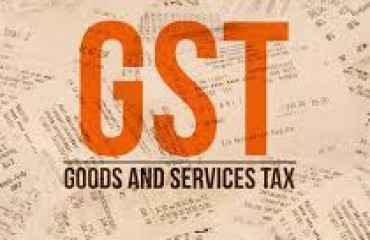
Anurag Mittal of UTI AMC says, while government welfare spending has increased, the tax burden on individuals compared to corporates needs to be addressed to boost disposable income and consumption.
The Indian economy has been in a sweet spot despite high interest rates, moderating global growth and greater geo-political headwinds in a post-COVID world.
India's real GDP is growing at one of the fastest paces among major economies. Inflation is moderating, the external balance sheet is stronger, and fiscal consolidation is in its third consecutive year.
The corporate sector has deleveraged while the financial sector is more resilient. An increasing number of people have moved up from economically weaker sections. As per Niti Aayog, India registered a significant decline in multidimensional poverty rate from 29.2% in FY14 to 11.3% in FY23.
However, there has been an element of divergence in growth after the pandemic. It has been characterised by heavy lifting from investments rather than consumption, the traditional bedrock of the Indian economy. Real consumption (55% of GDP, approximately) has grown at a very modest CAGR of 3.9% from FY20 to FY24, compared to 6.4% for investments (Gross Fixed Capital formation). This compares unfavourably to a more equitable 7.2% & 7.3% consumption and investment growth, respectively between FY14 to FY19.
The fall in consumption is despite a strong fall in unemployment, strong wage growth (charts below) and increased rural spending. The total government spending (rural, agriculture and fertiliser subsidy) has grown at a strong CAGR of 15.3% from Rs. 1.37 trillion in FY14 (1.2% of GDP) to Rs. 5.68 trillion in FY24 RE (1.9% of GDP).
The consumption behaviour and their underlying drivers have important implications for policymakers and market participants as they have a bearing on inclusive growth, private sector capex and credit cycle.
Naturally, the upcoming Budget and wriggle room with the Government due to the high RBI dividend has led to increasing debates on the need to reduce GST rates, increase welfare transfers and enhance tax reliefs to boost consumption.
We hereby present our assessment of the reason for the weakening consumption and the remedial actions to address it.
Disposable income also matters for consumption
While there has been a substantial increase in Government welfare spending, interest-free loans, income growth as well as employment growth, what matters for consumption is also the disposable income in the hands of consumers.
It needs to be appreciated that individuals also pay taxes on their consumption like GST, excise, customs, etc. apart from income tax. In the chart below, we have tried to assess how both corporate and individual taxes have grown with respect to GDP. The following chart depicts the individual tax (income + wealth + customs + excise + service + GST) as a proportion of GDP and compares the same with corporate taxes and fiscal deficit to GDP.
As can be seen, most of the heavy lifting, in terms of revenue collection, has been undertaken by individuals. Corporate tax contribution, on the other hand, has remained stagnant since corporate taxes have not been adjusted for PLI benefits. This is also reflected in substantial deleveraging by corporates with corporate debt to GDP reducing from 75% in 2011 to 52% in 2022, while household debt remained stagnant at 35% of GDP during the same period (Source: IMF).
It was widely expected that with the reduction of corporate taxes the private sector capex cycle would take off and a virtuous non-inflationary growth cycle would commence in India. However, corporates not only need a favourable tax regime but also a promising demand, amongst other aspects, to augment their capacity. The slowdown in consumption has probably dissuaded corporates from kickstarting major expansion.
Conclusion: Focus on reforms to improve tax buoyancy and widen tax base
"King must collect tax like honeybee, enough to sustain but not too much to destroy" – Chanakya
India does not have a structural problem of lower income growth or employment, which is extremely difficult to correct in the short to medium term. Employment, income growth as well as rural spending have been most flattering in recent times!
The Government has been understandably focused on augmenting tax revenue to boost capex and increase welfare spending. Since the demand for public expenditures will continue to grow, an emerging economy like India should take all measures to achieve higher growth in tax collection than GDP growth. Perhaps the higher tax burden can be more equitably distributed between corporates and individuals.
The cut in GST may not be very efficient given the unique multiple-rate tax structure for India. It could result in higher leakages on account of input credit/lower pass on to customers, thus reducing revenue for the Government and income to the consumer. One of the better ways to address consumption would be to increase tax-exempted income or give more tax benefits to individuals in line with the policy priorities of the Government like housing, tourism, education, savings, etc. For the future, the tax exemption limits/deductions can also be linked to the CPI inflation index to avoid mechanical interventions and ensure consistent cash flows in the hands of consumers.
Even within consumers, incremental improvement in revenue mobilisation can come from a widening of the tax base. Given the need to boost manufacturing, a well-balanced tax structure will remain critical to sustaining long-term growth.
Disclaimer: The views expressed are the author's own views and not necessarily those of UTI Asset Management Company Limited. The views are not investment advice and investors should obtain their own independent advice before taking a decision to invest in any asset class or instrument.
Mutual Fund Investments are subject to market risks, read all scheme related documents carefully.
The author, Anurag Mittal, is Head of Fixed Income, UTI AMC.
Disclaimer: The views and recommendations above are those of individual analysts, experts and broking companies, not of Mint. We advise investors to check with certified experts before making any investment decisions.
